A Lesson on Baijiu with Ming River Founder Derek Sandhaus
We sat down with Derek Sandaus, founder of Ming River Sichuan Baijiu, to find out all about the world's most popular and most commonly misunderstood spirit.
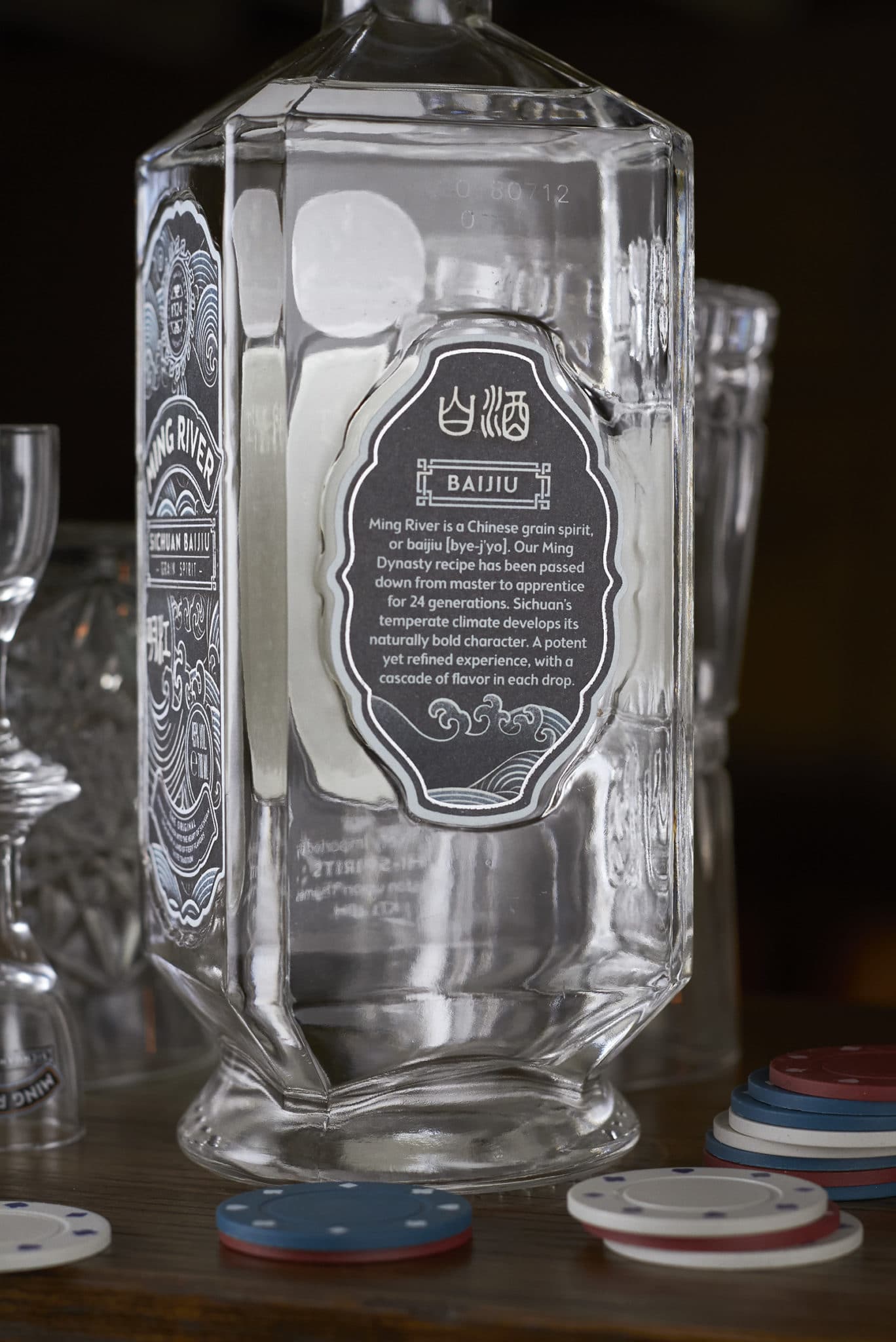
First off, for those who perhaps don’t know you, could you first introduce yourself and tell us what you do as your day-to-day?
Sure. So my name is Derek Sandhaus. I am a writer and a co-owner of the brand Ming River Sichuan Baijiu. I have written several books, mostly about China, and it was through writing about China that I got into its most favourite distilled spirit, baijiu [bye-geo].
So tell us a little bit more about your story. You covered the writing aspect but tell us, how was it you got into the drinks industry initially?
So it was a very roundabout way, and it really was through the writing. I graduated from university in 2005, and then I moved to China the next year with my then-girlfriend, now wife, and I started off teaching English but I quickly got into publishing. I started working at a publishing house that published a lot of books that were English-language, using kind of cultural topics to introduce readers to China more broadly. So we would, for example, publish books on Chinese art, movies, relationships and sex practices – we even had one on Chinese rock and roll! So we were really drawing a wide net trying to figure things out. And I remember one time, I was invited to a lunch. And if you are out on a business lunch in China, oftentimes people will serve you baijiu, and it’s a very, very strong, potent flavorful drink. At that time, I wasn’t drinking a whole lot so I was kind of thrown off by being served this in the middle of the day in quite large quantities! And I remember I was in a cab back to my office after lunch just thinking to myself; “Why would anyone do this to themselves at 11 am? This is a crazy way to live!” [laughs] But yeah I really wanted to find out why people there drank so much baijiu. What’s going on with this drink?
So, by the time I got back to the office, it was a fully formed idea that someone needed to write a book about baijiu that kind of explored what it was and why it was so important in China, but so overlooked in the rest of the world. And at the time, I was working mostly as an editor. So my thinking was that someone else was going to write this book and I would just edit it. But then around 2011, I got married and left China and so I left my job. And then my wife became a diplomat so we were back in China just months after we left Shanghai, but this time in Sichuan Province which happens to be the leading producer of baijiu in China. It’s due to this series of coincidences that I decided to go ahead and write the book myself, and I spent most of the next two years both studying every piece of writing I could find in English – and then later in Chinese – about Chinese alcohol, Chinese drinking culture, and where it comes from. Also, in the middle of writing the book, I took a six-week trip around China, sometimes with friends sometimes on my own, just going from major liquor producing region to major liquor producing region until I felt like I had covered a pretty broad survey of alcohol in China and had accumulated enough amusing drinking stories that I had the basis of a book. And so I sat down and I started writing it.
In Mandarin, baijiu literally just means ‘white alcohol’, so it’s not referring to a specific type of alcohol. In its commonly understood contemporary meaning, it refers to a family of distilled spirits that are all made in a traditional Chinese style.
I think I completed my first draft around 2012 or 2013, and so I pitched it to a publisher. They came back to me and said that it was an interesting topic, it covered a lot of ground, but nobody was going to read a book about baijiu because nobody knows what it even is. I said that’s a fair point, and they said, “But would you be willing to write a book that explains to people, like, in most basic straightforward terms what baijiu is?”, and I said, “Sure, I can do that.”
I couldn’t do that at all [laughs]. I had no idea how alcohol was made or anything like that but when someone offers you a book and you want to write a book, you say, “Yes, of course I can do that,” and then you figure it out later. So I spent the next six months pretty much drinking every bottle baijiu I could get my hands on and teaching myself the basics of alcohol fermentation, distillation, production, and really digging deep into technical Chinese alcohol production manuals until I felt like I had accumulated enough knowledge that I understood how it was made, what it actually was, and could communicate that to people who were interested in alcohol outside of China. So that book came out a year later it was called Baijiu: The Essential Guide to Chinese Spirits. Five years later, I also published a much different version of that first book that I had been noodling around with, called Drunk in China, and that came out last fall. I’m feeling pretty good to finally get that one out there but so much has happened in the meantime. I started a baijiu company and have now spent most of the last few years travelling throughout the US and Europe and teaching anyone who would listen what I know about baijiu.
Quite an origin story. We’re definitely going to have to get my hands on a copy or two! So where did the idea of a distillery come from? How did two books turn into a brand?
Well, I had a baijiu blog called 300 Shots at Greatness – because people still had blogs back then – and it was named after a theory that I had been introduced to that the amount of baijiu took to acquire a taste for it was 300 shots. So I was kind of chronicling my learning about this thing in real-time for anyone who cared and, just after I published the first book in 2013, I received an inquiry via the blog from a french guy, Charles Lanthier, who was starting a baijiu brand of his own and was looking for a distillery. So I began meeting with producers with him back then and took him around Sichuan for a couple of days and we hit several different distilleries until he found the one he wanted for the brand. He launched the next year, called HKB, and so that was my first foray into consulting.
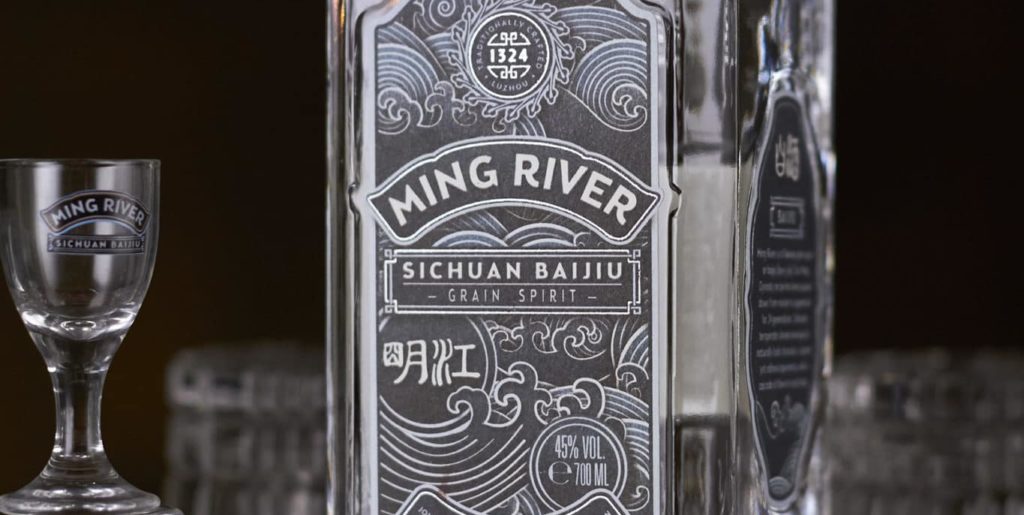
Not long after this, in 2014, I was speaking at the Beijing International Literary Festival about my book, explaining the different styles to it. And at the end of my talk, a guy came up to me, named Bill, and he said that he and his friends were planning to open a cocktail bar in Beijing and that they didn’t have a good hook for it. Before that night, they’d all kind of thought baijiu was something Chinese people liked but expatriates and other people would never gain a taste for. But you could see, even after the talk, people were going up to the bottles and pouring themselves more and comparing them and they were getting really excited about it and the wide variety of styles. So he said, “I think this is it. I think we’re going to open a cocktail bar that specializes in baijiu.”
So that opened within six months and it was called Capital Spirits. It still exists in some form in Beijing. It’s moved several times since then. But it was this really cool, speakeasy-style place where you could get flights of baijiu and try the different styles. It found a pretty strong audience among both ex-pats and Beijing locals as well, which really showed me that there was this huge untapped potential for serving baijiu in a nontraditional setting. A lot of people from distilleries also started going to this bar and saw that they had attracted all of these groups of people who don’t usually drink baijiu, like young people and foreigners, and asked whether they could help them out with creating products for new markets. And so – because of our prior relationship – they reached out to me, and that’s when we started a consulting business where we help people who want to take baijiu overseas. Within just a few months, Ludo Lau Zhao, which is one of the oldest and one of my favourite producers in China, reached out to us and said that they had actually been wanting to make a product for the international market for a while, and they thought we were the right team to do it. They were willing to invest in the project, but they wouldn’t do it if we weren’t personally involved, and so we became co-owners in the project and we spent a few years developing what became Ming River Sichuan Baijiu. We launched in 2018 and have been at it pretty steadily, increasing our range and audience, ever since.
So definitely a case of the road-less-travelled! For us laymen, and please forgive our pronunciation, but what actually is baijiu? Can you tell us a little bit about its history and some of the processes that go into it? You mentioned it’s got quite a range, so maybe you could delineate some of those for us as well?
Gladly. In Mandarin, baijiu literally just means ‘white alcohol’, so it’s not referring to a specific type of alcohol. In its commonly understood contemporary meaning, it refers to a family of distilled spirits that are all made in a traditional Chinese style. So what that means is, they’re all grain base, they’re all fermented and distilled as a solid rather than a liquid, they often use this natural culture of wild yeast and other microorganisms to conduct that solid fermentation process, and most contemporary baijius are all blended. So that’s what it is broadly. But I think in terms of what you should probably know about it as an outsider is that it doesn’t use any artificial flavouring. It’s a clear spirit right out of the still and so it tends to be higher ABV. It can sometimes go down to like the 30s (%), but usually, it’s in like the 40s and 50s. The way that it’s created means it often has very strong, fruity, estery flavours, and also – something which is quite unique to Chinese spirits – strong umami flavours, really kind of these darker, funkier flavours like mushrooms, cheese, so it can have this savoriness that you don’t usually get out of your spirits. So that can be both really exciting to people who’ve never tried it before, it can be very confusing, and, to some people, it can be totally off-putting. But for me, I think it just underlines how much variety there is in this category. I’m 10 years in and I really haven’t gotten bored with it just yet because there are so many opportunities for finding new expressions and new techniques that you’re not familiar with. So yeah, I would definitely recommend giving it many, many shots.
It comes from Sichuan province, in the southwest, and our distillery is actually the oldest continuously operating distillery in China. They’ve been around since 1573, and they are credited with inventing this style of baijiu, so we knew that what they were making at their Distillery was really an authentic accurate representation of the category.
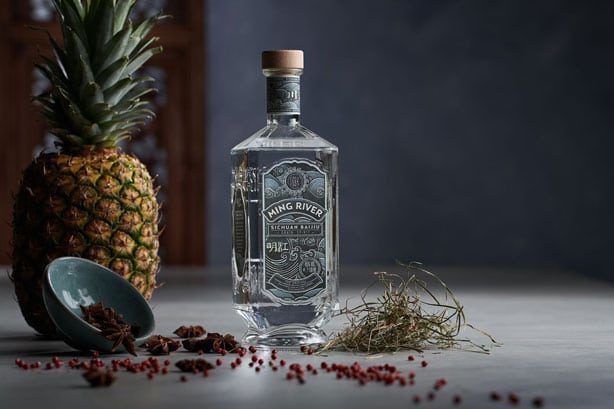
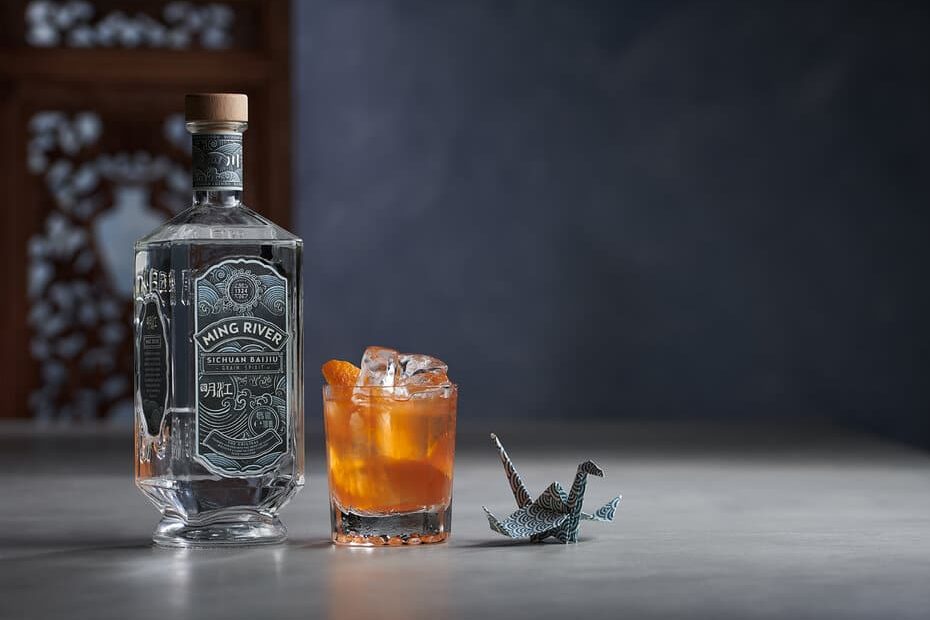
I think we will be after this! So this takes us on to your brand itself. You sort of touched on this, but what specifically is Ming River trying to achieve and bring to the baijiu category?
So what we’re trying to do is a little bit different than what other brands have done before us. What I mean by that is a lot of earlier attempts at an international baijiu brand started from the premise that most foreigners didn’t drink baijiu so there was something wrong with it as a category and therefore it needed to be changed, it needed to be altered, and needed to be turned into something that it wasn’t. Our approach, meanwhile, is that we thought baijiu as a category was really exciting and interesting – what it’s lacking is an understanding of what it is and how to serve it so we focused a lot more on education as a brand. I run this website, drinkbaijiu.com, that just contains a bunch of free resources for educating yourself on baijiu. I also do lots of masterclasses and staff training at bars, where I try to make sure everyone who’s going to be working with our baijiu has a broad understanding of what baijiu is, how people drink in China, and how it can be served to people who’ve never tried baijiu before in a way that will be successful and help them get excited about having at their bar.
We’ve made lots of minor aesthetic changes to the product, so what we’re selling right now is what’s called ‘strong aroma baijiu’ and that’s the most popular style of baijiu in China. It comes from Sichuan province, in the southwest, and our distillery is actually the oldest continuously operating distillery in China. They’ve been around since 1573, and they are credited with inventing this style of baijiu, so we knew that what they were making at their Distillery was really an authentic accurate representation of the category. We worked with their blender as well as a bunch of bartenders who we like working with in New York and subjected them to several rounds of taste tests, where we had different blends from the distillery, until we landed on one that we thought could also work in cocktails and would play up the flavours and the blend that was most attractive to experienced mixologists. And then we put lots of thought into the packaging. For example, unlike most baijiu bottles, we went with a glass bottle, and we added certain things that would make it pop on a back bar. We even considered practical things, so we extended the neck so that if you had it in your well, you could grab it by the neck of the bottle – with most baijiu bottles you can’t do that – and it also fits a speed pourer. So just really simple but really practical things like that. And then, the most practical thing of all, is that as I mentioned we were working with China’s oldest distillery, Ludo Lau Zhao, which has the problem that it is unpronounceable to someone who doesn’t speak Chinese. And so we gave it the name Ming River which we thought paid homage to the distillery since it was founded in the Ming Dynasty and sits right along the Yangtze River, and it’s also a Chinese name that can be pronounced by someone who doesn’t speak Chinese. I mean it’s branding 101 being able to remember the name of the thing you’re trying to sell!
By doing it this way, and collecting the microorganisms onsite at the distillery, it means that every single baijiu you taste is going to taste slightly different than the next because it relies on the actual air at the site of the distillery.
We really impressed by the silhouette and loved the educational aspect of it because that really chimes with us and what we’re trying to achieve. Anyway, this brings us on to the process behind the liquid itself. Did you want t talk a little bit more in-depth about that?
Sure. The most remarkable thing, I think, to someone who is a connoisseur and student of world spirits, is the way that like baijiu is fermented and distilled. So not all, but most Western spirits use a process of liquid fermentation where you in some way extract the sugar from the grains and then you add yeast. You create a beer or wine, basically, and then you distill that liquid by heating it up, collecting the alcoholic vapours, and cooling it back down into a stronger alcohol. But with baiji you’re not working with liquids. You’re not at any point extracting the alcohol from the grain until you distill it. So the way that this works is that they use this culture called qu, which is basically various grains that are mixed together. We use wheat in Ming River. So you mash them into a paste, from that paste you make bricks, and then you put the bricks in kind of a dark, temperature-controlled environment that’s open to the elements for a few weeks. And what happens is that as those grains decompose they begin to absorb all of the microorganisms that live in the air at the distillery. So that’s mould, yeast, and bacteria in that order. And you’re left with what is essentially a dried out brick full of microorganisms.
And so you ferment grains and most Baijui uses sorghum, which is a tall stocky plant like corn which we steam, then we crush the bricks of qu and mix the powder in with the steamed grains. And what happens is each part of that microorganic culture begins to interact with the grains. So the mold begins to break down the starch in the grain and convert it into sugar at the same time that the yeast in the qu is converting the sugar into alcohol. And then, the bacteria is interacting with the alcohol to create esters and aldehydes and all of the things that give baijiu its unusual flavours. What you’re left with is a big pile of kind of soggy fermented grains, kind of like kimchi. You then extract the alcohol by doing what’s called ‘solid-state distillation’, whereby you put it in a Chinese pot still – which, in design and appearance, very much resembles a vegetable or dim sum steamer. It’s got a slotted bottom on the base of the pot, you pile the grains on top, then you put it over steaming water. The steam runs through the solid mash, heating it up until the alcohol begins to boil off the top of it. Because it’s going through a solid mash it kind of functions like a column still whereby, as the alcohol travels through the solid mash, it’s continually going through a refractory process where it condenses back into a liquid and then is redistilled as it travels up. So it’s possible, in a single pass through a Chinese pot still, to get a baijiu that’s 60-70% ABV. So that’s really unusual, both that style, but it also does something by using qu for fermentation. I should add here that qu is used in most East Asian alcohols, but also every fermented East Asian product you can think of; soy sauce, fish sauce, and rice vinegar all use this ingredient, too. By doing it this way, and collecting the microorganisms onsite at the distillery, it means that every single baijiu you taste is going to taste slightly different than the next because it relies on the actual air at the site of the distillery. And so there’s this extra level of terroir, where you have this really strong connection between the baijiu and the place where it’s made that you don’t get if you’re just using a bag of yeast you bought offsite.
The strongest note you get out of Ming River is going to be pineapple. This really strong, fruity note. There’s also a floral, herbal note. Maybe it is a bit like anise, licoricey, fennel. And underneath all of that you get this strong, funky, umami, cheesy note.
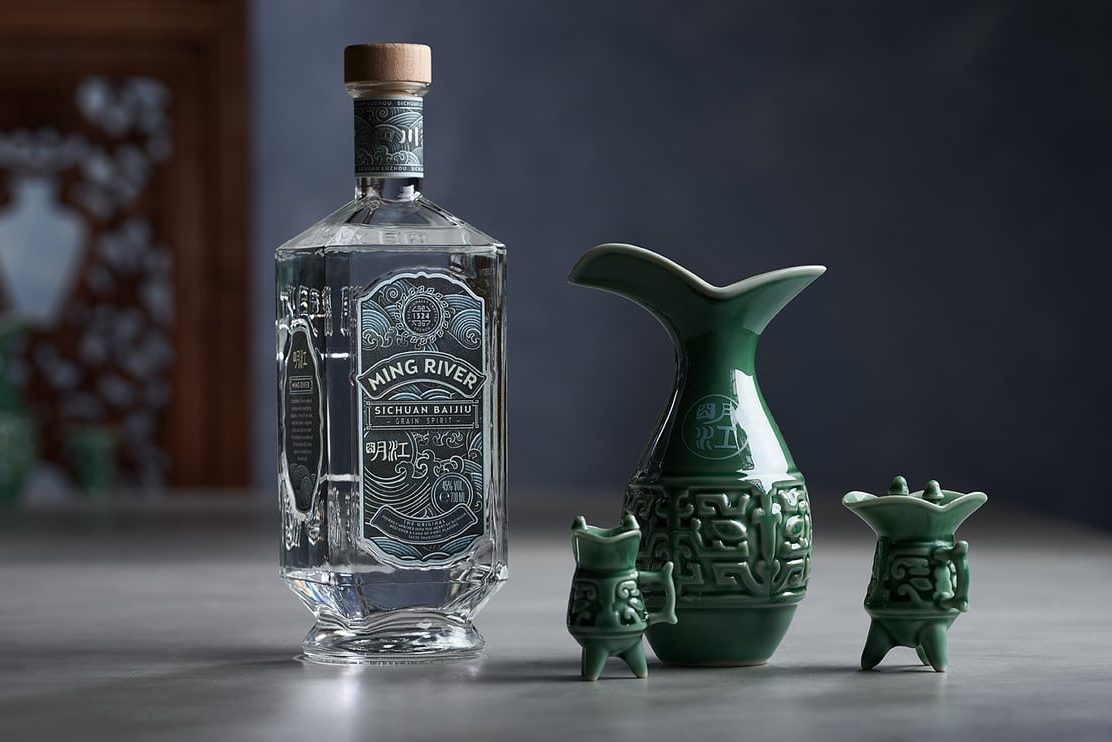
Thanks for that fascinating guide through your process! So, moving on to present events, why did you decide to work with us on our virtual cocktail classes? What drew you to us?
Well, as I said, one of the biggest obstacles to overcoming this huge knowledge gap we have between China and the rest of the world in terms of their spirits – how they’re made, what they are, how to gain an appreciation for them – is a lack of education. The easiest way to fix this is just sit down with someone, explain what it is, what they’re going to be experiencing. And just like tasting Ming River, for example. When you taste the strong aroma style for the first time, it’s an unusual experience. You’re hit with a lot of different flavours at the same time and it can be a little overwhelming to the palate and the senses. For example, the strongest note you get out of the Ming River is going to be pineapple. This really strong, fruity note. There’s also a floral, herbal note. Maybe it is a bit like anise, liquorice-y, fennel. And underneath all of that, you get this strong, funky, umami, cheesy note. And you can tell someone– what’s this going to taste like? Well, it’s going to taste like pineapple and anise and cheese. And while you may recognize all of those flavors, it’s understandable if you’re wondering how the hell it’s going to work in one drink because you’ve never experienced that before. And some of those flavours, at least the cheesy note, you’ve probably not had in a drink before.
It’s got so much natural sweetness that it really, really goes well and drinks like Mai Tais, Daiquiris, Pina Coladas, Painkillers. Once you’re in that headspace, you’re going in the right direction.
So just sitting down and talking someone through their experience helps them kind of isolate what’s going on in their mouth, in the glass, and gain more of an appreciation. And especially for bartenders, and people who want to mix that drink, it’s incredibly helpful to be able to break down what the component flavours of this drink are. Because once you have that, you can then think about what complements pineapple, what drinks work well with anise-like flavours, whether stuff like absinthe would work, and things like that. And then you can begin to kind of put together a plan for mixing it.
In terms of why we wanted to work with TT? Well, I should say a couple of years ago, after Bar Covent Berlin, the head of our European team, Matthias, – one of the co-founders of the baijiu bar in Beijing – was planning to expand into the UK from the beginning, and we took kind of a reconnaissance trip to the UK. And I was asking a good friend of mine, who was one of the first bartenders I knew working with baijiu, Paul Matthew, for a bunch of places we should check out over in town and TT Liquor came up. We went there and we went down into the basement, into this long, reclined chamber, almost like a coffin [laughter] or sarcophagus, but, my God, I had amazing drinks. I really, really liked the bar a lot. And so, from the beginning, we knew if we were in London that that was exactly the type of place we wanted to be working with. Someone who really had a cool space, but also was putting a lot of thought into ingredients and how to make satisfying cocktails that were a bit outside of the mainstream.
We appreciate it, Derek, and thanks for giving us your time! You’ll have to come by for another drink next time you find yourself in London! Speaking of which, just to end with, what cocktail would you say Ming River baijiu works best? What’s that perfect serve for you?
Perfect serve is going to be anything Tiki because the Sichuanese strong aroma baijiu style is so fruity and tropical. It really, really works a lot of the same ways that funkier rums like Jamaican rum and Rhum Agricole do. It’s got so much natural sweetness that it really, really goes well and drinks like Mai Tais, Daiquiris, Pina Coladas, Painkillers. Once you’re in that headspace, you’re going in the right direction. And the best drinks I’ve had– my personal favourite is a drink called Trader’s Treasure which was invented by well-known Tiki specialists in New York, Shannon Mustipher. But it uses some unusual ingredients for a tiki drink, like Cynar and Batavian Arrack. It’s a very complex, layered experience that hits you in waves, and it’s a special drink.
